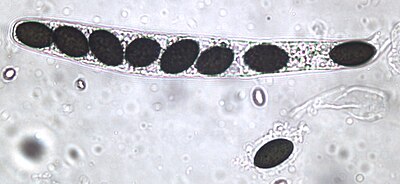Since we had to cancel Lectures 14 and 15 due to illness, all the fungal information was covered in the online lecture, at home assignment, and in Lecture 16/17.
Dear diary….
This week we went over FUNGUS! (I’ll take “Things that have more of a backbone than my ex-boyfriend, Alex”)
What they are: They are eukaryotes, make spores, reproduce sexually and asexually (mostly, we think), heterotrophs, can be microscopic and single celled (yeasts) or macroscopic and multicellular (mycelium).
What they are not: photosynthetic, plants, talking to you (that just means you ate one you shouldn’t have!)
The mycelium form is made of hyphae (hypha = singular) which is like a root-system that moves through the ground. They may keep their spores in specialized compartments called sporangia, or fruiting bodies like a mushroom. These are usually found above ground for better dispersal. They hyphae can be divided into single cells (divided/septate) or not divided (continuous/coenocytic) as this video so boringly explains….
The hypha are further sectioned up into zones
- apical growth zone – the location of a mystery proton/K+ antiporter that creates turgor pressure against the cell wall, pushing it forward and encouraging the hypha to grow forward
- absorption zone – location of transporters that import food, also where you’ll find an ATP synthase running in REVERSE – hydrolyzing ATP to pump protons OUT
- storage zone. self explanatory.
Notice that there are mitochondria too… what is different about the ATP synthase found there versus the one in the cell membrane of the absorption zone?
We talked about NUTRITIONAL CLASSES (notice these are NOT taxonomic ranks)
- saprophyte/saprotroph – fungi that live on dead stuff
- parasite – fungi that live on living stuff (with harm to the living stuff)
- mutualists – fungi that live on living stuff (with benefit to the living stuff)
Next were the Reproductive strategies:
Asexual : Budding (yeast), spore formation (mycelium)
Spores can be ejected into the air by fruiting bodies!
Sexual: merging of gametes between “male” and “female” which can come from the same organism, or different organisms.
Did you know that yeast can sexually reproduce too? We didn’t talk about it in class. Some fungi actually have more than 2 genders…. there’s male, female, and other genders that we don’t have words for in English. One fungus has over 23,000 different genders! I bet their Tinder app is complicated.
Here’s the two major genders of yeasts like Saccharomyces (a and alpha). You can see asexual reproduction by budding (1), but when a and alpha meet up, they can merge and form a diploid organism (2). This is sexual repro and allows genes to recombine and create more diversity.
Next come the Taxonomic ranks, the fungi are put into different phyla based on their distinguishing characteristics, or lack of distinguishing characteristics (I’m looking at you, Zygos)
- Chytridiomycota = have motile spores. These guys are also causing a really terrible fungal infection outbreak killing reptiles right now.
- Zygomycota = so, yeah. There’s nothing really special about these guys. What makes them unique is that they are not unique. Confused? Just think of this group as the “default” or “basic” fungus. If you’re looking at a fungus, and it has none of the other unique characteristics (asci, motile spores, plant root associates, mushrooms) then its a zygo.
- Ascomycota = store their spores in an ascus. Its a type of sporangium that is very specially shaped like a thin tube, and the spores (ascospores) are held in a linear arrangement … like a string of pearls.


- Basidiomycota = The shrooms! Any fungus that creates a fruiting body that looks like a mushroom is a basidiomycote.
- Glomeromycota = these are the ones that make associations with plant roots.
Fungi can be good (the decomposers, glomeromycotes, the fungi we use in the lab, etc), they can be bad (the parasites), and they can be really weird….
What the heck is happening to this ant????
We talked about how fungus can be used to impact humanity…. just a few thoughts….
- Ugh booze
- most of the world’s human infections are fungal
- They are THE MOST EXPENSIVE FOOD IN THE WORLD! Step aside Kobe beef!
We talked about the diseases that can be caused by fungi, which are in three categories:
- mycoses (infections)
- Superficial
- Subcutaneous
- Systemic
- Allergic responses
- Intoxications
We looked at some nasty pictures of fungal infections….. if I described a fungal infection could you figure out which category above it fell into?
Which one of these types of diseases includes the replication of fungi in the body?
Things to focus on this week:
- Name and describe the different types of nutritional approaches that fungi take (saprophytes, etc)
- Describe the types of asexual reproduction (spore formation and budding) and compare/contrast
- Name the different hyphal zones and what occurs in each
- Describe the distinguishing characteristic of each phylum of fungus
- Understand and describe the difference between the different ways that fungus can cause disease
- Understand and describe the difference between the different types of mycoses (also give an example of each)
- How do most of the antifungal medications work?
Comments? Questions? leave em below! (except for the question “what kind of fungus is this?” along with a picture of your feet. I don’t need to see that).

